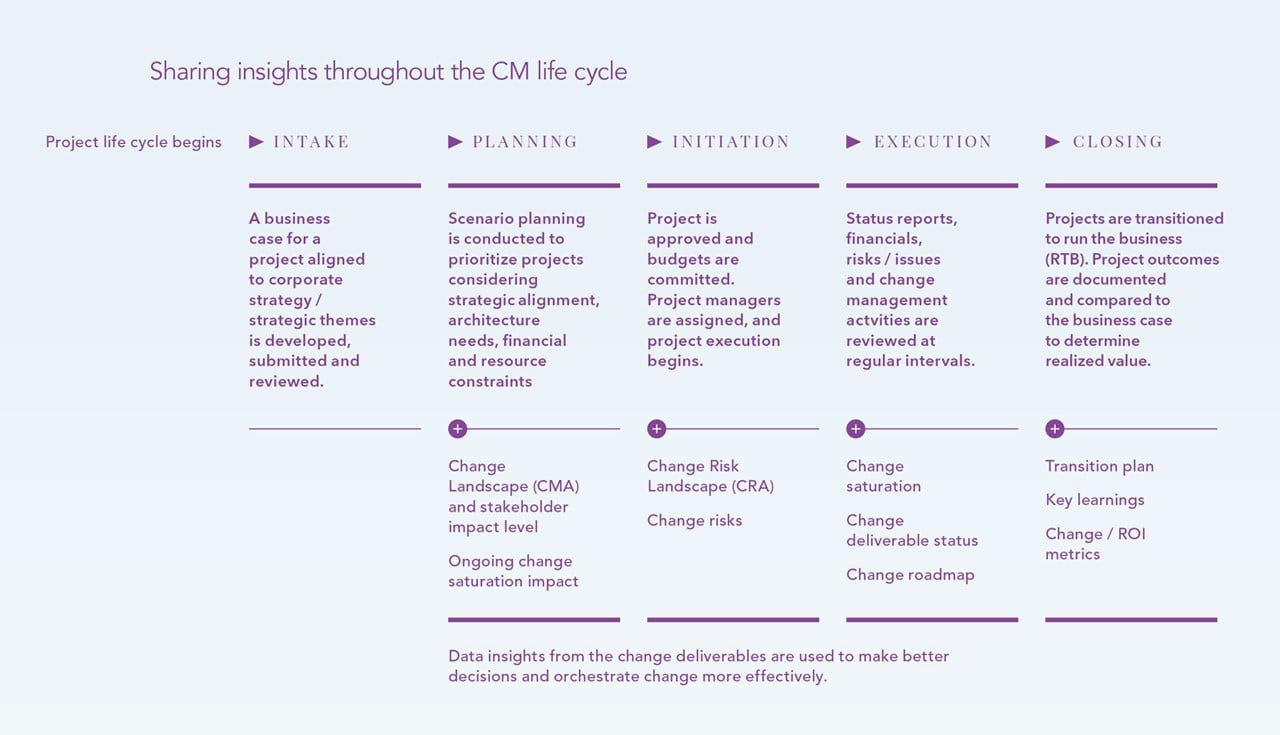How Autodesk uses automation to drive change agility

We all know that change management should be baked into transformation initiatives from the conception phase onwards for maximum success, but we also know that changing the enterprise culture so this can happen is challenging because of the paradigm shift it requires.
Achieving what we call the “big flip” to a stakeholder view of strategic change orchestration, where change adoption is factored in from the beginning of the project life cycle, is essential to enabling this paradigm shift.
But, how do you achieve a holistic, stakeholder experience-driven understanding of all of the different transformation initiatives across an enterprise? Traditional methods won’t cut it, because they’re not scalable. In this article, we show how Autodesk does it through technology and automation.
Traditional methods can’t keep up
Like many organizations, Autodesk used to use a traditional approach to reporting on its transformation initiatives. At an ACMP Global Connect Conference, Autodesk’s Senior Change Manager presented the success her team had with introducing automation and scalability into their change management model.
Originally, the data was gathered into a spreadsheet. While it contained a lot of valuable information for change leaders, with its hundreds of rows of data and thousands of cells, it was not in a format that was easily consumable or presentable.
The change team would spend a lot of time sorting, categorizing, and recalculating the data to roll it up into numbers and figures that could tell a clearer story. If someone wanted to see a different layer of detail or see the report from a different angle, it had to be generated manually, which required significant additional human resources and time per request, per report.
Multiply this by numerous simultaneous change initiatives across the enterprise and you have a change team spending inordinate amounts of time generating reports rather than focusing on more strategic tasks.
How Autodesk used technology to improve change visibility
To make their change management model scalable and able to provide more actionable insights to stakeholders at each level of their organization, Autodesk’s Finance Change Management Office aligned the change management life cycle with the project life cycle and introduced enabling technology.
They implemented ChaMa, iTalent Digital’s change management software, which allows them to automate data analytics and generate custom reports. Since they can instantly generate reports from any perspective on any aspect of the change management program, they can now share change management insights with enterprise leadership and other stakeholders throughout the project life cycle, as illustrated in the table below.

Using the data analytics and visualization capabilities of ChaMa, Autodesk can now instantly generate reports tailored to any stakeholder, from enterprise leadership all the way down to the individual end user level, at any point in the project lifecycle.
Some of the key reports include:
- Change impacts – View of people, process, technology, and policy impacts across stakeholder groups to understand the nature and timing of what is changing and who it is impacting
- Change saturation – Presentation of change saturation levels from different stakeholder perspectives
- Change risk landscape – Breakdown of all the factors that risk impacting program adoption
- Change roadmap – Visualization all change activities in an integrated change management plan, at any level of granularity, such as actions planned and executed for communication, engagement, training, key milestones, and more
- Key learnings and metrics reports – create a continuous improvement and agile mindset by using the data to glean new learnings and feedback
- And many more. With data analytics, automation and robust customization and visualization features, the reporting options are limitless
Results
Not surprisingly, a ton of time is saved through automated reporting; generating experience-driven, stakeholder centered reports only takes about half an hour, compared with up to a week or more using the traditional method.
Every year, this time savings adds up to more than a month’s worth of an employee’s time that is freed up for more strategic tasks, per project.
Beyond the time savings ― and more importantly ― change managers now have more time to get stakeholders ready and equipped to adopt to the change, for greater change agility and better business outcomes.
Read the full case study for more details on how Autodesk aligned the change management lifecycle with the project management life cycle using technology. For more information about ChaMa’s features and benefits, visit ChaMa’s website at www.chamacloud.com.




